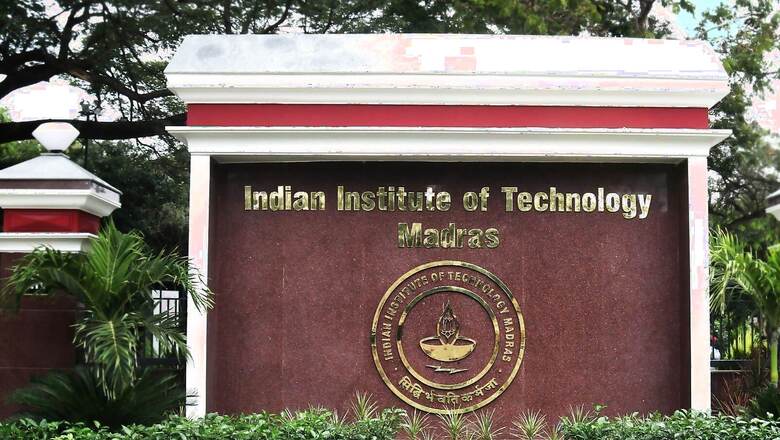
views
Researchers at the Indian Institute of Technology (IIT) Madras have devised a revolutionary algorithm-based technique to alleviate interruptions in vital networks like air traffic control and electricity distribution during a targeted attack.
This strategy was put to the test on two infrastructure networks —air traffic and power distribution. The research was peer-reviewed and published in ‘Physica A: Statistical Mechanics and its Applications’, an international journal.
However, it is believed that as the Internet of Things (IoT)-based technologies become more widely adopted across society, it’s critical to build networks that can withstand such attacks.
Karthik Raman, Core Member, Robert Bosch Centre for Data Science and Artificial Intelligence (RBCDSAI), IIT Madras, reportedly said the terrorist attacks of September 11, 2001, which occurred all on the same day and targeted a single country—the United States—brought the entire airline industry to a halt.
As a result of the 9/11 attack, commercial flights like JetBlue Airways were grounded for several days and airline executives in the airline industry pondered the sector’s future. As a result, US airlines alone lost $8 billion that year and the industry wasn’t profitable until 2006.
According to Raman, such risks serve as a reminder that in today’s increasingly interconnected world, there is a great possibility of a single negative event causing the entire network to go down.
“Air traffic, road traffic, power distribution infrastructure and even social media platforms are all examples of highly connected networks and are, therefore, highly vulnerable to targeted attacks,” added Raman.
However, it should be noted that the researchers’ technique aims to make networks more resilient by judiciously rewiring them to lessen their vulnerability. It is implemented using an algorithm that suggests a way to build spare capacity in the network so that if one of the network’s nodes (one entity linked to many others) is attacked, the traffic of the affected node is routed through the spare capacity, allowing the network to continue to function.
While explaining, Raman said: “This spare capacity can be compared, in simple terms, to a spare tyre kept in a car. The dormant spare capacity (spare tyre) is used if any of the four tyres (nodes) in the vehicle becomes inoperable during a journey.”
“The algorithm takes a network whose spare capacity has to be determined as an input and gives out a modified network with added spare capacity, the cost of spare capacity for the network, etc. Importantly, the algorithm also optimises the cost associated with adding spare capacity,” he added.
The lead author of the study and a student at the institution, Sai Saranga Das, said the team investigated the relationship between the installation of inactive spare capacity in a network and the associated capital, as well as operational costs in this study.
The next step, according to Das, would be to apply the technique to biological networks in order to acquire potentially insightful information about them.
“It was found that the algorithm increased the robustness of these networks to targeted attacks. The algorithm was also highly effective in increasing the robustness of canonical scale-free networks, which are representative of many real-world networks when compared to existing strategies to mitigate targeted attacks on these networks,” Das said.
Read all the Latest Tech News here


















Comments
0 comment